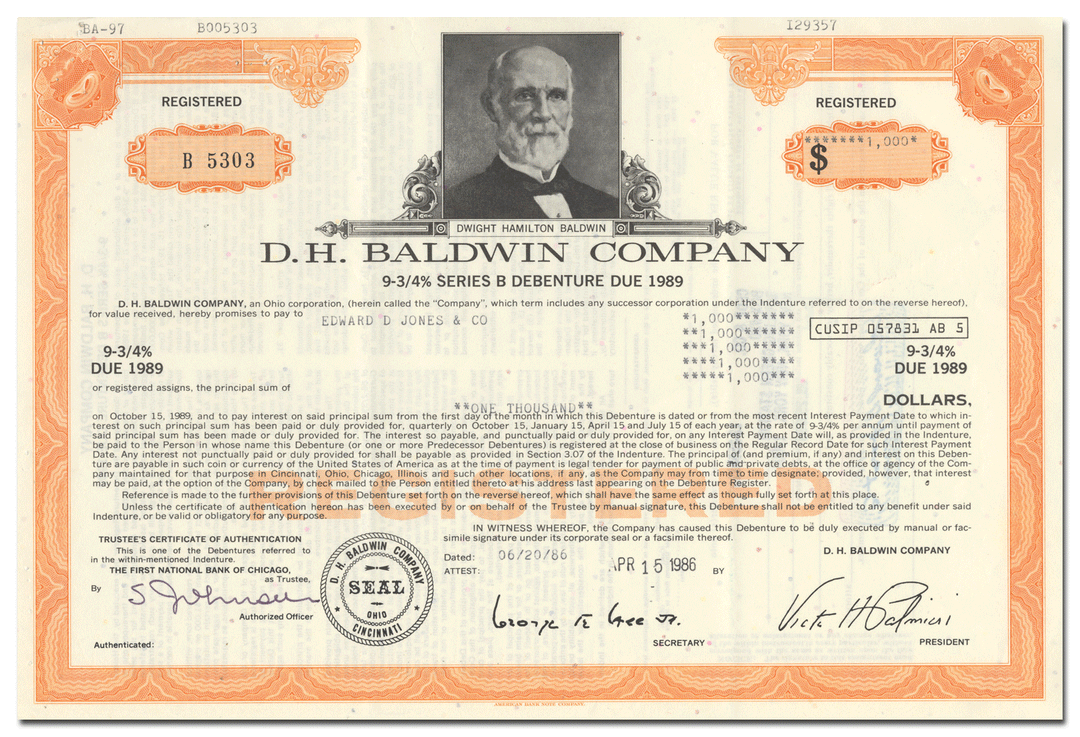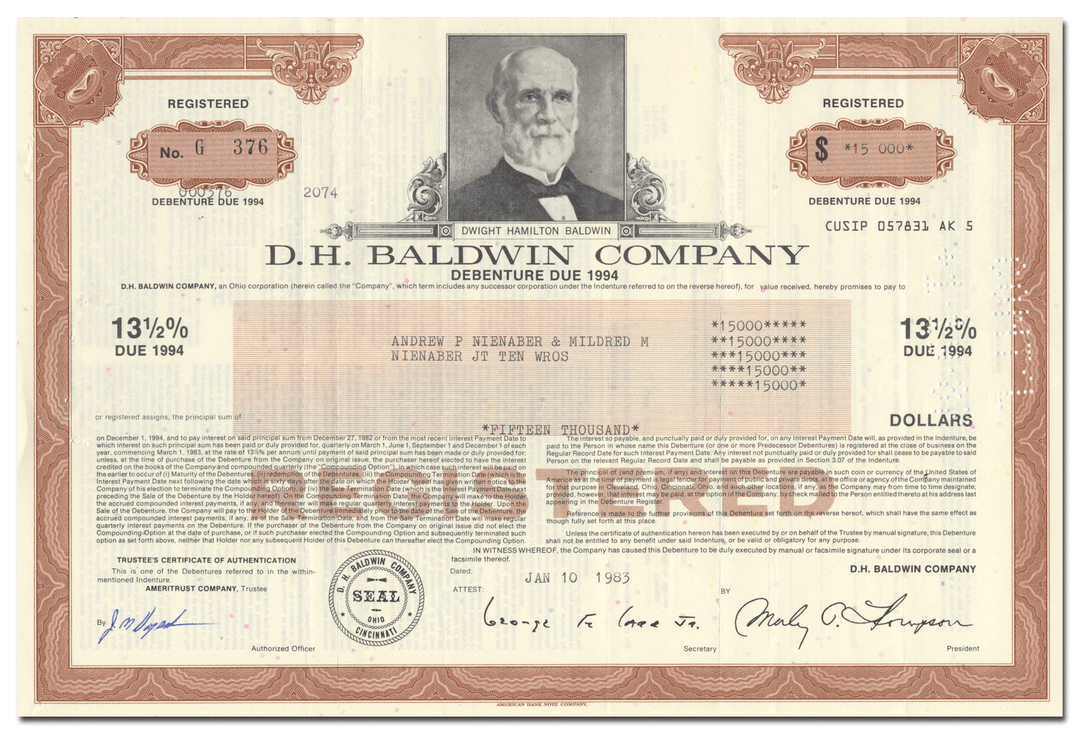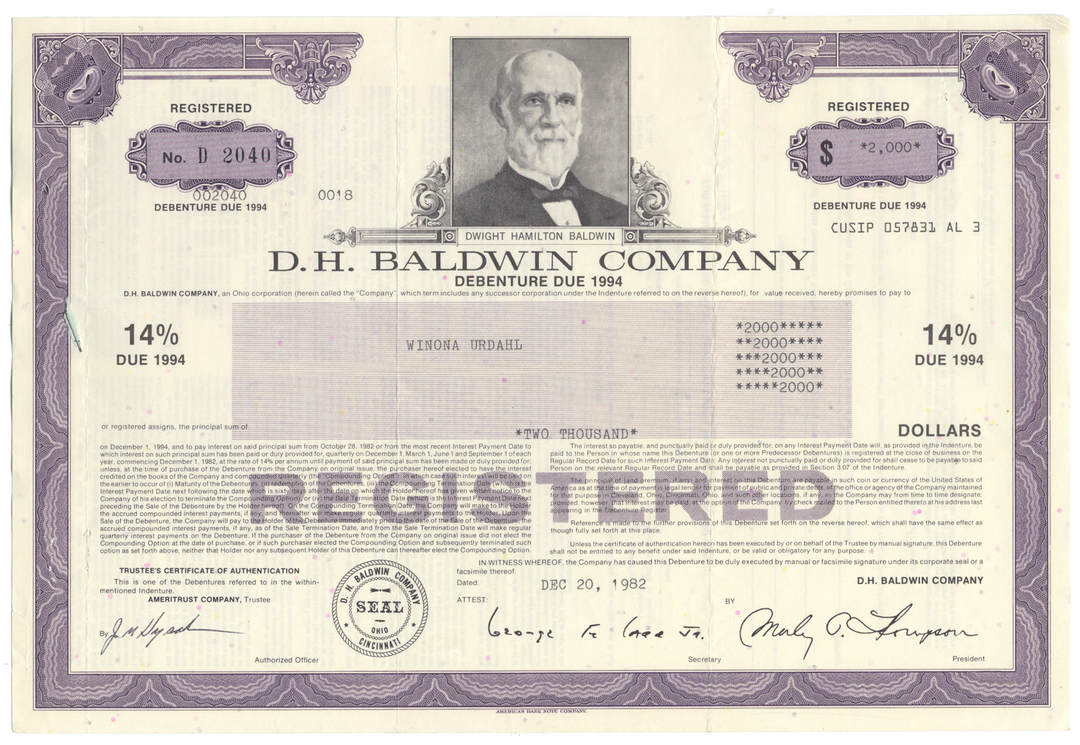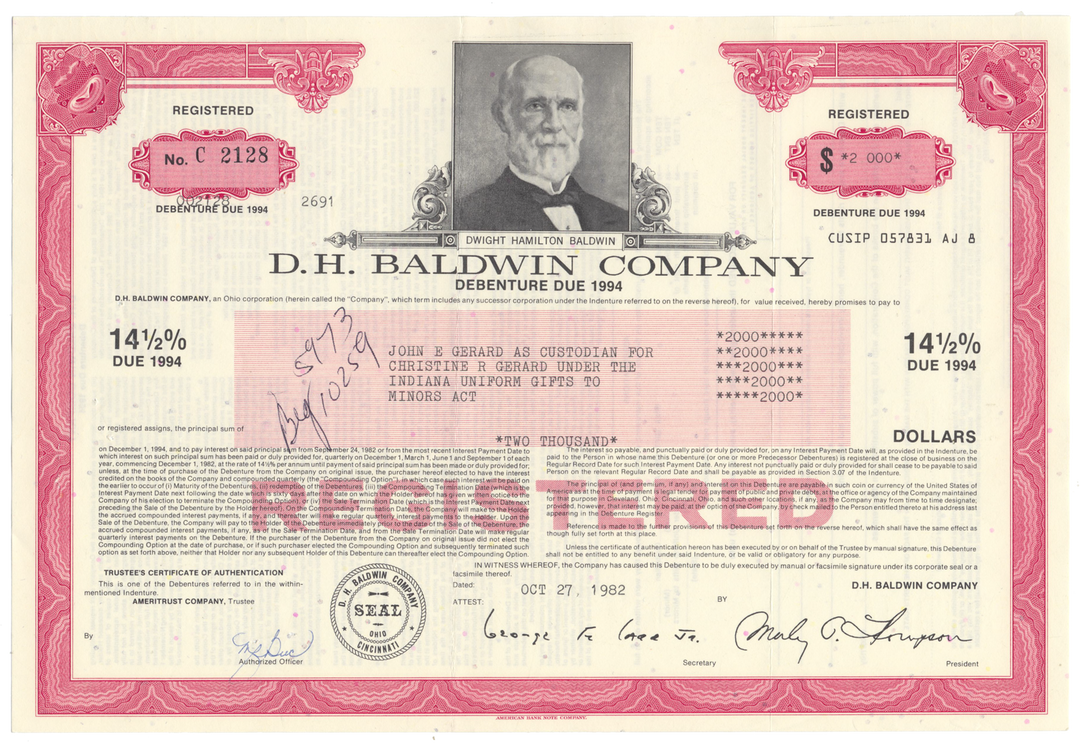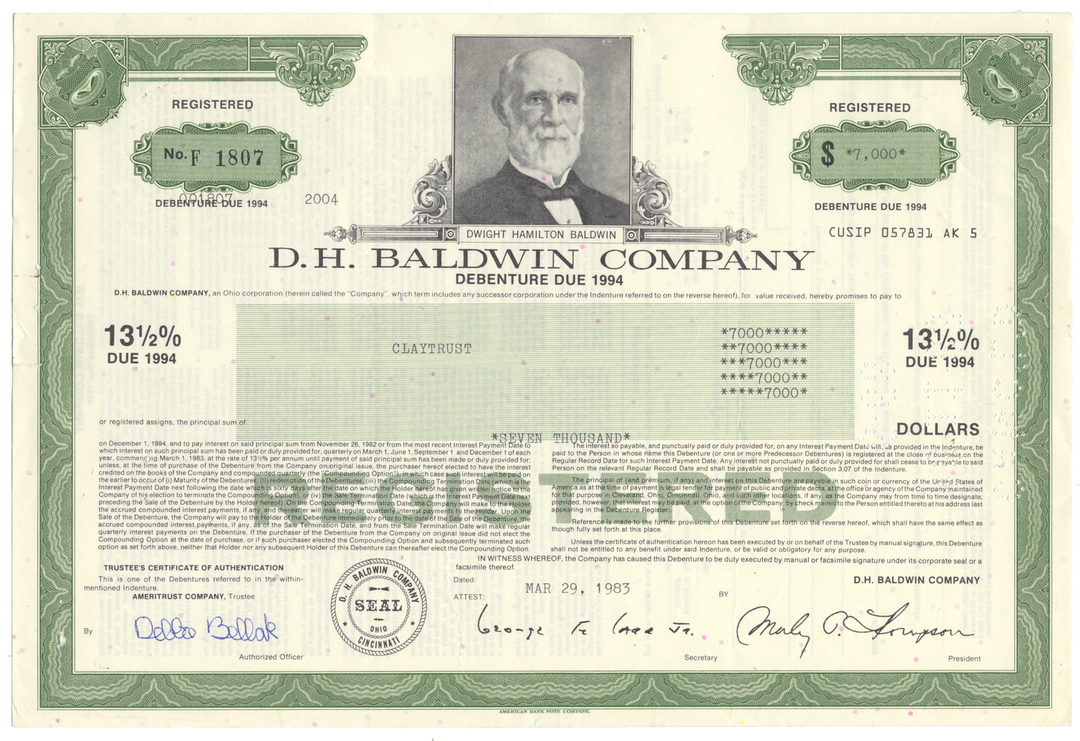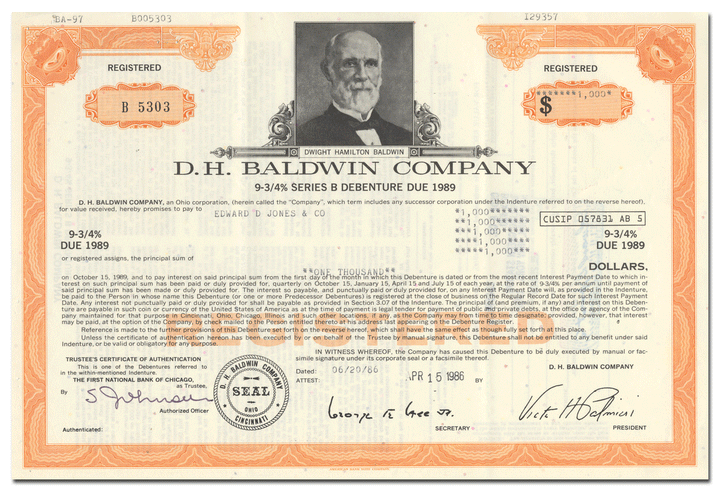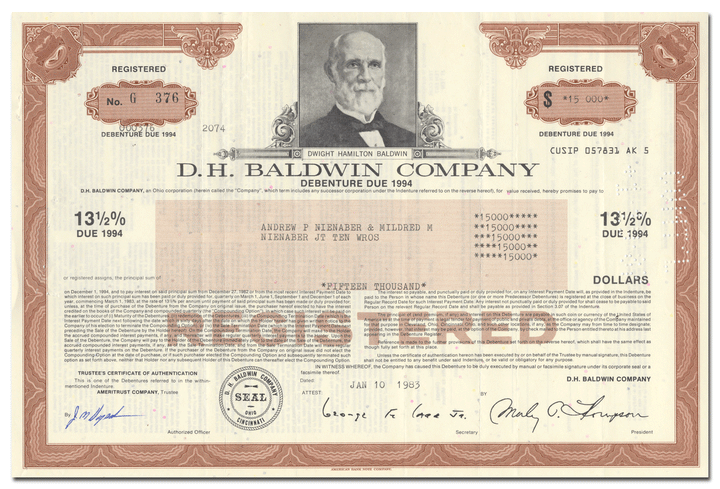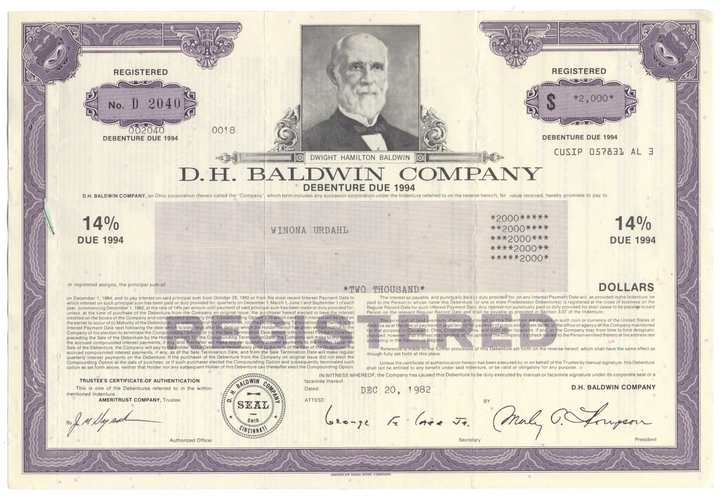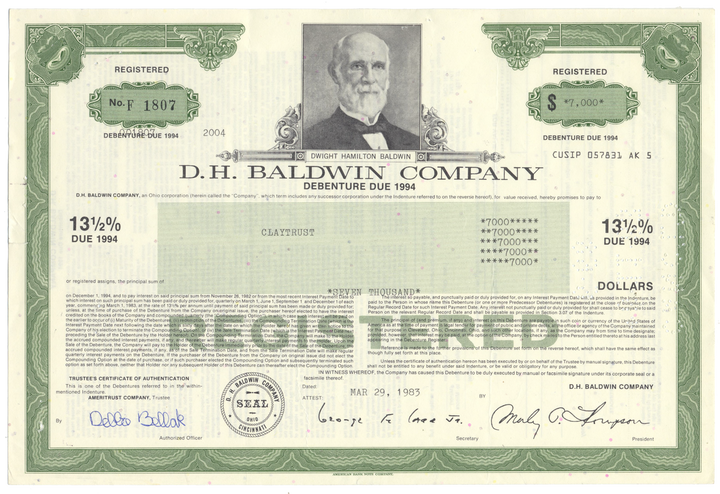D. H. Baldwin Company
- Guaranteed authentic document
- Orders over $75 ship FREE to U. S. addresses
Images are representative of the piece you will receive
Over 35 years old
Debenture bond
1970's and 1980's
Issued, canceled
American Bank Note Company
Machine printed signatures
12" (w) by 8" (h)
NA
Historical Context
From inauspicious beginnings in a small, upstairs room in Cincinnati, the D.H. Baldwin Company grew to be one of the largest manufacturers and suppliers of pianos and organs in the United States. Baldwin began his business career by selling a few pianos and organs to friends and former music students in 1862. Soon he was able to invest $2,000 to found the company which bears his name.
Baldwin and his partners, Lucien and Clarence Wulsin, A. A. Van Buren, and George W. Armstrong, Jr. opened branch offices in other cities outside of Cincinnati. In 1890, they were able to build their own factory, the Baldwin Piano Company, to manufacture pianos. To supplement this production, they received pianos from other suppliers.

In 1898, the Baldwin Piano Company was incorporated and the supply factories became a part of Baldwin's new company, the D. H. Baldwin Company. The Hamilton Organ Company and the Hamilton Piano Company, located in Chicago, and the Baldwin Piano Company and the Ellington Piano Company in Cincinnati, were some of the suppliers.
International recognition was accorded the "House of Baldwin" when it won the Grand Prix at the Paris Exposition in 1900 and Lucien Wulsin was decorated with the Cross of the Legion of Honor. It also won the Grand Prize at the St. Louis Exposition in 1904, and the Grand Prize at London in 1914. By 1913 Baldwin was exporting to 32 countries.
In the 1920s Baldwin expanded its product line to player pianos, and thanks to prudent planning by then-president Lucien Wulsin II, the company was able to weather the Depression. After a brief hiatus during World War II when its factories, like many others, were diverted to producing airplane parts, the company returned to a brisk business in musical instruments. In 1946 Baldwin introduced the first electronic organs, which were so successful that the company changed its name in 1953 to Baldwin Piano & Organ Company.
During the 1970s the company made a concerted effort to expand into the financial sector, acquiring savings & loan institutions, insurance companies and investment firms; by 1982 pianos represented only 3% of the company's business, and the following year excessive debt forced the company into bankruptcy. For the next twenty years the company struggled in and out of debt and changed hands several times, eventually being purchased by Gibson Guitar Corporation in 2001. The company operates today as a division of Gibson Guitar Corporation, and manufactures instruments under the Baldwin, Chickering, Wurlitzer, Hamilton, and Howard names.
Related Collections
Additional Information
Certificates carry no value on any of today's financial indexes and no transfer of ownership is implied. All items offered are collectible in nature only. So, you can frame them, but you can't cash them in!
All of our pieces are original - we do not sell reproductions. If you ever find out that one of our pieces is not authentic, you may return it for a full refund of the purchase price and any associated shipping charges.






